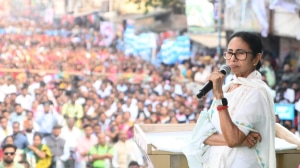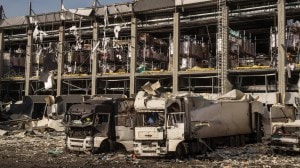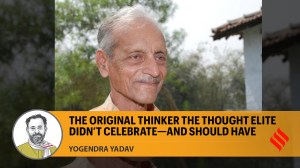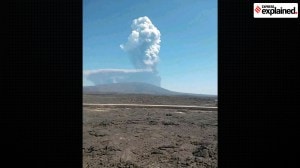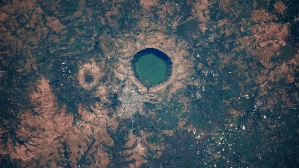How even a change of 1°C in heat can affect polls
Average temperatures during polling months have been steadily rising as general elections get pushed to summer; a study found a rise a year before elections impacts both how voters vote, and how many candidates participate
 A study on climate change and political participation in India found that while higher average temperatures in the year leading up to state Assembly elections generally lead to the number of candidates falling, beyond a certain temperature threshold, heat actually leads to an increase in voter turnout. (Express Archives)
A study on climate change and political participation in India found that while higher average temperatures in the year leading up to state Assembly elections generally lead to the number of candidates falling, beyond a certain temperature threshold, heat actually leads to an increase in voter turnout. (Express Archives)As the election season heats up, India’s weather won’t be far behind. Earlier this week, the India Meteorological Department (IMD) forecast a harsh and arid summer over a majority of the country, from April to June, with a high probability of heat wave episodes lasting as long as 10 to 20 days in this period – coinciding with polling for the Lok Sabha elections, scheduled from April 19 to June 1.
The general elections in the country haven’t always been held in the summers. Until 1991, when the ninth Lok Sabha’s term ended early necessitating fresh elections, the Election Commission generally scheduled polls in the winter months. In the first elections in 1952, polling was held in January. Just two of the following eight elections went beyond March. But 1991 saw polling dates stretch to June 5.
While the subsequent 1996 elections were held from April to May, the off-cycle polls of 1998 and 1999 were held in February and September-October, respectively. However, since 2004, when then Prime Minister Atal Bihari Vajpayee dissolved the Lok Sabha early, general elections have been on a consistent April-May schedule.
Heat and voting days
Between 1952 and 2019, India’s annual average temperature hovered between approximately 24°C and 26°C. But the average temperature during polling months has consistently increased as elections have got pushed further down the calendar. If in the the winter elections of 1952, the average temperature during polling was 18.67°C, by 2019, when elections were held in April-May, the average temperature was 29.55°C, with the average maximum temperature at 35.28°C.

Despite the increases in temperature during voting, the national average voter turnout has consistently risen, from just 45.7% in 1957 to a record-high 67.4% in 2019. Since 1962, turnout hasn’t dropped below 55%, even in the first proper summer elections of 1991, when 55.9% of voters turned out.
The high average temperatures when general elections months now fall have coincided with an increasing frequency of heat waves. The IMD defines a heat wave as the period when the maximum temperature of a region hits 40°C in the plains or 30°C in the hills, and is 4.5°C to 6.4°C above the normal maximum temperatures. A heat wave is also declared if the maximum temperature exceeds 45°C, regardless of the deviation from the norm; while a “severe” heat wave means temperatures above 47°C.
In recent decades, both the frequency and intensity of heat waves have been rising. As per state-wise heat wave days recorded by the IMD from admittedly a limited number of stations, between 1970 and 2019, the average number of such days across the country exceeded 90 annually. 2020 and 2021, however, saw the number of heat wave days on record fall to 42 and 36. In comparison, there were 205 heat wave days in 2022.

This year, the IMD has predicted a high probability of heat wave episodes lasting as long as 10 to 20 days (against a normal of 4 to 8 days) over the next three months, with many of these spells expected between April and June. Rainfall associated with pre-monsoon conditions is expected to be below normal over most regions, with aridity and shortage of water adding to the overall heat.
Heat impact on elections
A study on climate change and political participation in India, conducted by Amrit Amirapu and Irma Clots-Figueras of the University of Kent and Juan Pablo Rud of the University of London, found that while higher average temperatures in the year leading up to state Assembly elections generally lead to the number of candidates falling, beyond a certain temperature threshold, heat actually leads to an increase in voter turnout.
The study, which looked at Assembly elections between 2008 and 2017, measured how frequently temperatures crossed 36°C, the threshold above which crops suffer and agricultural output drops. It found that when temperatures are “in a positive range”, “agricultural output goes up and voter turnout goes down”. “But once temperatures get above 36°C, agricultural productivity goes down and voter turnout goes up,” Amirapu, an associate professor of economics at the University of Kent, told The Indian Express.
The study’s finding was that if average temperatures were 1°C higher than the threshold in the year before an election, there would be a higher voter turnout of about 1.5%.
According to Amirapu, what they surmised was that “when farmers are doing better, when temperatures are in a positive range and their agricultural output is higher, they are less driven to go to the polls”. In the opposite case, “high temperature shocks reduce agricultural output, which drives rural citizens to the polls and it changes how they vote – they make agricultural issues more salient and lead them to elect candidates with an agricultural background”.
He adds that among the issues voters are likely to prioritise after a period of high temperatures are investment in irrigation and electricity infrastructure, and agricultural loans.
Among candidates, an increase above the threshold sees a fall in numbers – that is, for every 2°C above the threshold, one less candidate contests. This was generally observed in seats where there were already 10 or more candidates and the ones dropping out were unlikely to win anyway, with a real chance of forfeiting their deposits.
“One hypothesis is that if you are a candidate from a rural area and there is an adverse temperature shock, this is bad for the local economy and could be bad for the candidate as well. What that means is the cost of losing your deposit may become more significant,” Amirapu says.
Urban voters understandably don’t respond to high temperatures the same way as rural voters. “This may be because the negative effects of high temperatures are highest in agriculture compared to other sectors. This is not to say that high temperatures don’t have negative effects in non-agricultural industries – they have been shown to reduce productivity and output in manufacturing, for example. But the economic penalties seem to be most destructive in agriculture, and that pushes people in rural areas to the polls,” Amirapu says.
While their study focused on Assembly polls, Amirapu adds, he expects to see similar trends in the Lok Sabha elections too.



- 01
- 02
- 03
- 04
- 05








